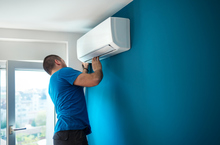Home Improvement Energy Tax Credits
When you replace old doors and windows, install solar panels, or upgrade a hot water heater, you reduce your energy bills. But the cost of making these energy-efficient improvements can be daunting. That’s where the Energy Efficient Home Improvement Credit and the Residential Clean Energy Credit — two possible tax credits — can be helpful.
You can claim the Energy Efficient Home Improvement Credit for improvements, additions or renovations to an existing home, but not for a newly constructed one. The following costs qualify:
- Exterior doors, windows, skylights and insulation materials
- Central air conditioners, water heaters, furnaces, boilers and heat pumps
- Biomass stoves and boilers
- Home energy audits
The credit is a percentage of the total improvement expense in the year of installation; through 2032, it is 30%, up to a maximum of $1,200 annually. Biomass stoves and boilers have a separate annual credit limit of $2,000 annually with no lifetime limit.
The Residential Clean Energy Credit lets you claim credits for qualifying costs to either an existing or a newly constructed home. Authorized costs include:
- Solar, wind and geothermal power generation equipment
- Solar water heaters
- Fuel cells
- Battery storage
The amount of credit taxpayers can take under this tax credit is:
- 30%, through 2032, with no annual maximum or lifetime limit
- 26%, through 2033, with no annual maximum or lifetime limit
- 22%, through 2034, with no annual maximum or lifetime limit
To claim these credits, taxpayers should file Form 5695, Residential Energy Credits, which offers instructions and more information, with their tax returns.
Renters also may be able to claim some costs, but property owners cannot claim the credits on property they rent out.
Be aware that companies soliciting your business may use exaggerated claims to motivate you to make energy-efficient changes to your home; these claims are scams.
©2025


